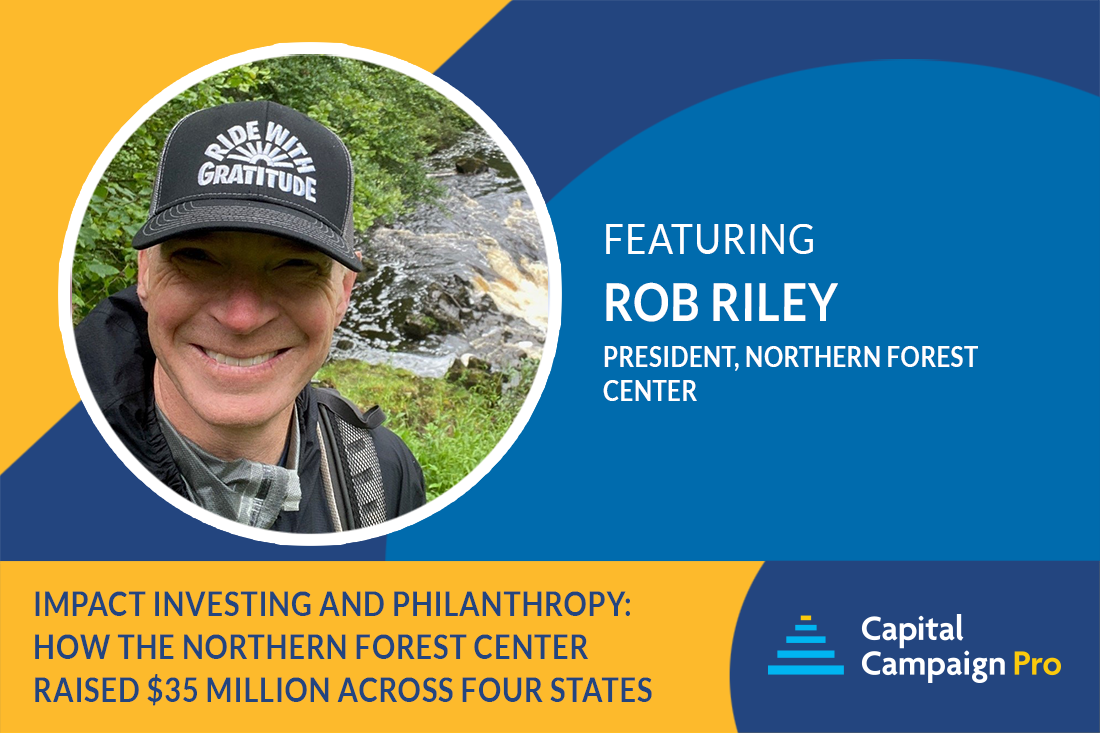Podcast: Practical Advice for Donor Visits – Don’t Wear Colored Socks!

Season 3, Episode 15
You might be wondering what colored socks have to do with fundraising. In this episode, Andrea shares two wonderful stories relating to donors. Listen to learn from her wisdom and experience.
Listen Now:
Amy Eisenstein:
Andrea’s going to share two stories about practical advice and why you should never wear brightly colored socks on your donor visits.
Hi, I’m Amy Eisenstein. I’m here with my colleague Andrea Kihlstedt, and today you are going to hear two fascinating stories that are going to give you practical, simple advice for successful donor visits.
Andrea, start us with one of your amazing stories.
Andrea Kihlstedt:
Years ago, I went to a seminar on fundraising on capital campaigns, I think, or major gifts fundraising, led by a guy whose name was David Dunlop. Now, David Dunlop was this amazing human being who created the major fundraising program at Cornell University. He came up with the idea of Moves Management and created a program at Cornell that made use of that. Now, that moves management, it grew in different ways. Dave’s thinking about how to do major gifts was really seminal. He was a wonderful, wonderful human being.
I had the good fortune of going to this seminar that he gave, an in-person seminar. When I got there, all of the chairs were full, the room was jammed. So I went, and I sat myself down in the front on the floor. I was young in those days. I could just sit myself down on the floor in the front of the room. Dave started talking. I knew him a little from other things.
Early on in his talk, he said, “You know, one of the things that I want to tell you is you should never wear colored socks when you go and talk to a donor.” I looked down, and I had on the brightest colored knee socks that you could ever imagine, right? I happened to like bright socks and bright knee socks. I mean, to this day I do.
I looked at Dave, and he got a twinkle in his eyes as he looked at my bright colored socks and he said, “You may wonder why.” He explained:
“What you have to know is that your donor visits are not about you. They’re about the donor. And everything you do to call attention to yourself is not helping you turn the attention to the donor. Even things like how you dress, the more they grab the donor’s attention, the more the donor starts talking about your colored socks, the less successful your visit is likely to be. So you want to be as bland as you possibly can.
And then your job is to call out things that the donor is doing and wearing and get the donor talking and telling you about themselves rather than the donor saying, ‘Oh, Andrea, what amazing socks you have on?’ Right? I would rather have the donor tell me why he has a brightly colored kerchief in his pocket or whatever it is, because that’s what this meeting is about. The donor has to reveal themselves enough so that you can be talking about your organization just as it dovetails with his or her interests.”
And honestly, I’ve never forgotten that — don’t wear colored socks.
Now, honestly, I still love colored socks. But when I have a meeting like that, I do try not to dress in a flamboyant way. I do try to become more pared back so that I can turn the attention to the donor. And I think it’s worth it for all of us to think about doing that.
Remember, the Focus Should Never Be on You, the Fundraiser
Amy Eisenstein:
Let’s not take it so literally either. It’s not just about clothes. It’s about the way you talk, the stories you tell, how much air you take up in the room. So are you leaving space for the donor to talk or are you telling stories and facts and figures and showing charts and brochures and whatever you have, slide decks…
So really it is about — you can use the colored socks, of course, as a metaphor, right? So how are you coming across, how are you presenting so that the focus really is, and the attention really is on the donor, and that there’s plenty of space and opportunity for them to share about their relationship with the organization, their connection to the mission and their passion for philanthropy. That’s what you’re there for, and that’s the point.
Andrea Kihlstedt:
That’s perfectly said, Amy. Now, the next time you get ready to go out to talk to a major donor about anything, when you look down at your feet and you realize that you have a nice staid black socks, you’ll remember what it is you’re really doing in that room.
Amy Eisenstein:
Now listen, I know a lot of fundraisers who love to dress for success and are very stylish. I don’t want you to take away from this that you can’t have any personality when you walk into a meeting with a donor. Of course, that is not the case. But the focus shouldn’t be on you.
And so anything that you can do to draw attention to the donor and make sure that the conversation points to the donor, that’s the point of this. So we’re not telling you not to be you. I don’t want that to be the takeaway.
And you need to figure out how to be more neutral. You’re representing the organization, and that relationship that you’re building with the donor needs to stay beyond you. So it really isn’t about you. It is about the organization. And I think that that’s part of the point.
Think Peripherally: Even Bumper Stickers Can Be Distracting
Andrea Kihlstedt:
Amy, let me tell you one more story. It’s a similar topic really, though not about socks.
There was a time in my career when I was doing a lot of feasibility study interviews and I was driving all over to do those interviews. It was a presidential political season. There was a big election coming up, and I had very strong feelings about that upcoming election.
One day I had an appointment with a very wealthy woman in New Jersey. I mean, she really was an incredibly wealthy woman. I drove up to her place. There was the gate, and I drove in the gate and up the long driveway, which had light colored pebbles. You can imagine what it’s like, right? Drove up this winding driveway to this round area. I parked my car. There were two statues by her front door. It was a very elegant place.
I went in and met her, and we had a wonderful conversation. We really did. I liked her. She was forthcoming. She was so helpful. It was just a good enough conversation so that at the end of it, she walked me to my car to say goodbye.
I get in my car, and she’s standing by her door watching me drive off. And I have never been more painfully aware of the political stickers on the back of my car than I was at that moment. They were simply inappropriate for me to have political stickers on my car when I was using the car for that purpose, because my politics didn’t matter. That wasn’t what it was about. And her politics were quite different. I knew her politics were quite different.
It was just a reminder, again. It’s another “don’t wear bright colored socks,” right? I made it about me and my opinion even by just having those bumper stickers on the back of my car. I don’t know that it changed her mind in any way, but had I been fully professional, I wouldn’t have done that.
Amy Eisenstein:
And it might have for another donor. It might have.
The Relationship between Fundraiser and Donor is About the Organization
I’ll never forget, I was doing a board training once, and I was talking about building relationships, very similar to the experience you just had. To me, it’s about finding common ground between the donor and the organization. What do they want to see accomplished that the organization can do or wants to do, and how can they help?
One of the board members came up to me and she said, “Well, I think the way you’re talking about relationships sounds fake and phony because you’re not being genuine.” She was indicating by… if you don’t like their politics and you don’t say something… That’s sort of what she was saying. Aren’t you just friends with them because of the organization? I was taken aback a little because I didn’t think what I was talking about was fake or phony at all.
I said, “Well, do you genuinely and authentically care about the kids?” And she said, “Yes, of course.” And I said, “Well, in the organization, they’re genuinely and authentically taking care of these needy kids.” And she said, “Of course.” I said, “Well, the relationship is based around that.”
It doesn’t mean you’re celebrating birthdays together or going out with family as family friends. That’s not the relationship. The relationship is about the organization. And in that case that you just described, politics didn’t matter because you could come together on whatever the issue was that you were both passionate about, and that was genuine and authentic. And politics or colored socks would just get in the way of that.
Andrea Kihlstedt:
That’s exactly right.
Final Thoughts
Amy, I think we tend to know these things and then we forget them, because it’s natural to want to step forward as your biggest self. And it’s just a reminder to think about that a little before you go and have a conversation with a donor about the organization you are part of.
Amy Eisenstein:
Yeah, I think in this highly divisive world that we live in right now, we should take every opportunity to come together with people on topics that we can agree about. And philanthropy honestly is often one of them; feeding children or creating art or whatever the case may be. So come together in areas that you can. But the focus isn’t you; it is the organization.
Excellent. Great stories, Andrea.
Andrea Kihlstedt:
Good stories. I’ve wanted to share those stories for a long time, so I’m happy to have the chance.
Amy Eisenstein:
I know. Once you’ve been in the field for a few years, you have a collection of stories. I think it’s great.
Well, thanks for sharing those today. I think listeners will have learned a lot.



Leave a Comment